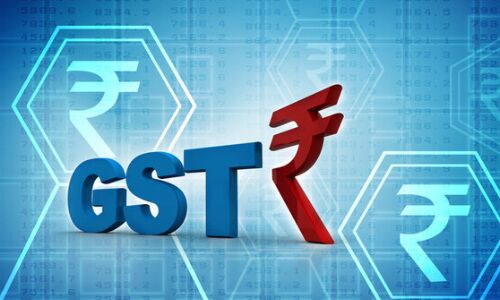Sources indicated that the GST Council might consider increasing the lowest tax slab to 8% from 5% and pruning the exemption list in the Goods and Services Tax regime to enhance revenues and reduce states’ reliance on the Centre for compensation at its next meeting. A panel of state finance ministers is expected to deliver a report to the Council by the end of this month, considering different revenue-raising measures such as raising the lowest slab and rationalizing the slab.
Currently, GST is a four-tiered framework with tax rates of 5, 12, 18, and 28%.
Essential items are either exempted or taxed at the lowest rate, while luxury and demerit products are charged at the highest rate. Luxury and sin commodities are subject to a cess in addition to the full 28 percent slab. This cess is collected to reimburse states for revenue losses caused by implementing the GST.
According to reports, the GoM is expected to boost the 5% slab to 8%, resulting in an extra Rs 1.50 lakh crore in yearly income. According to estimates, a 1% rise in the lowest bracket, which primarily includes packaged food goods, leads to an annual revenue gain of Rs 50,000 crore.
As part of the rationalization process, the GoM is considering a three-tiered GST system with 8, 18, and 28% rates.
If the plan is approved, all products and services presently taxed at 12% will be taxed at 18%.
Furthermore, the GoM would like to reduce the number of exempt commodities from GST. Unpackaged and unbranded food and dairy products are currently free from GST.
According to sources, the GST Council will convene later this month or early next month to consider the GoM report and decide on the states’ income condition.
With the GST compensation scheme about to expire in June, states must become self-sufficient and no longer rely on the Centre to bridge the income shortfall in GST collection.
When the GST was implemented on July 1, 2017, the Centre committed to reimburse states for five years till June 2022.
“As the revenue neutral rate has fallen and the states face a shortage of almost Rs 1 lakh crore, efforts must be taken to make GST revenue neutral, and the only way to do so is to rationalise the tax slab and curb evasion,” a source said.
Over the years, the GST Council has frequently caved into trade and industry pressures and reduced tax rates. For example, the number of commodities subject to the highest 28% tax fell from 228 to fewer than 35.
The Council, chaired by the Union Finance Minister and includes state equivalents, established a team of state ministers last year, led by Karnataka Chief Minister Basavaraj Bommai, to recommend measures to increase income by rationalizing tax rates and addressing anomalies in tax rates.

